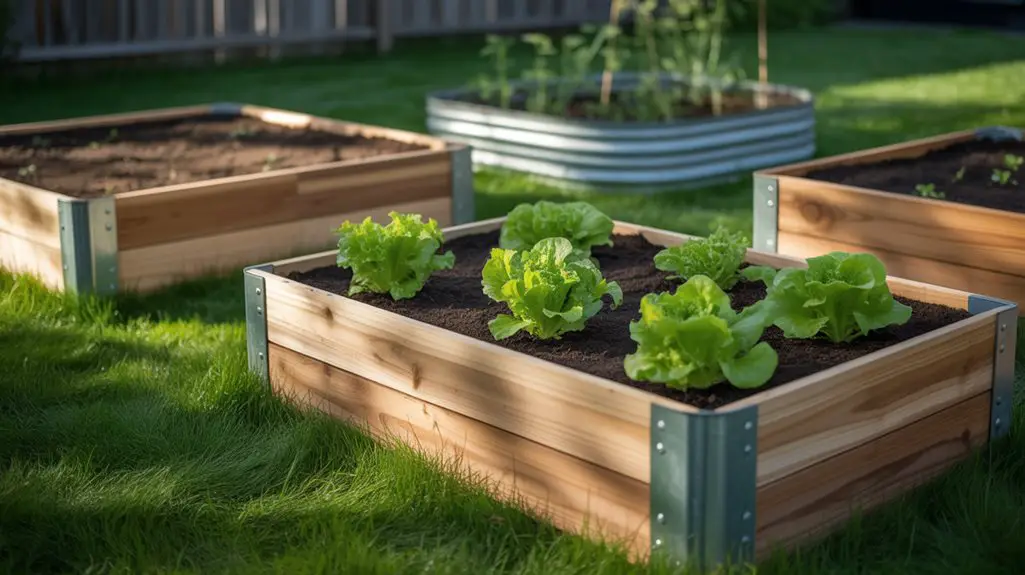California homeowners John and Lisa transformed their drought-stricken lawn into a stunning permeable paver patio that now captures 95% of rainfall for groundwater recharge. You’ll find this eco-conscious shift happening across the country as outdoor living spaces evolve beyond aesthetics. Selecting materials with minimal environmental impact doesn’t mean compromising on durability or style—in fact, the most sustainable options often offer superior performance characteristics and unique visual appeal that conventional materials simply can’t match.
Permeable Recycled Pavers: Sustainable Beauty Meets Drainage
While traditional concrete patios contribute greatly to urban runoff, permeable recycled pavers offer a dual solution that addresses both environmental concerns and water management needs.
These innovative pavers, typically made from reclaimed plastics or crushed construction waste, create a porous surface that allows rainwater to percolate through to the soil below. Additionally, integrating these pavers with rainwater systems enhances their effectiveness in managing stormwater runoff.
You’ll find they’re available in various colors and textures that mimic natural stone, allowing for aesthetic flexibility in your outdoor design.
When properly installed with a base of crushed aggregate, they’ll provide decades of service while reducing flooding risks and replenishing groundwater supplies.
These pavers also help filter pollutants and prevent erosion, contributing to healthier local watersheds.
Their manufacturing process requires considerably less energy than conventional concrete, further reducing your patio’s carbon footprint.
Reclaimed Wood and Composite Decking: Second-Life Materials

Reclaimed wood—sourced from old barns, factories, and warehouses—diverts centuries-old timber from landfills while showcasing unique patinas and character impossible to replicate in new materials. Composite decking combines recycled plastic with wood fibers, creating a durable alternative that doesn’t require the harsh stains, sealants, or preservatives typical of virgin wood. You’ll find these composites withstand moisture, resist insect damage, and maintain structural integrity for decades. While their initial cost exceeds conventional pressure-treated lumber, you’ll recoup this investment through minimal maintenance and extended lifespan. Both options considerably reduce deforestation pressures while closing material loops in construction waste streams. Additionally, using these low-impact materials helps promote a healthier ecosystem in your backyard.
Natural Stone and Gravel Options: Minimal Processing, Maximum Impact

Natural stone represents the quintessential eco-friendly patio material because it requires minimal energy input from extraction to installation.
You’ll find options like limestone, slate, and sandstone offer exceptional durability while creating permeable surfaces that manage rainwater effectively and reduce runoff.
For even lower environmental impact, consider locally quarried stone to minimize transportation emissions.
Complement these with regionally sourced gravel or crushed stone for pathways, which allow water infiltration and natural aquifer recharging.
When installing, opt for dry-laying techniques with sand or decomposed granite bases rather than cement mortars.
This approach not only reduces embodied carbon but also makes future reconfiguration or material reuse possible.
The thermal mass properties of stone additionally provide passive temperature regulation, keeping your patio cooler in summer and warmer in spring and fall. Additionally, using eco-friendly materials in your design can enhance the overall sustainability of your outdoor space.
Conclusion
Your eco-friendly patio isn’t just beautiful; it’s crucial for our planet’s health. Like a forest that naturally filters rainwater, these sustainable materials work harmoniously with nature rather than against it. By choosing permeable pavers, reclaimed wood, or natural stone, you’re creating an outdoor space that reduces environmental impact while enhancing your home’s functionality. These materials aren’t just trendy—they’re critical steps toward sustainable living.




